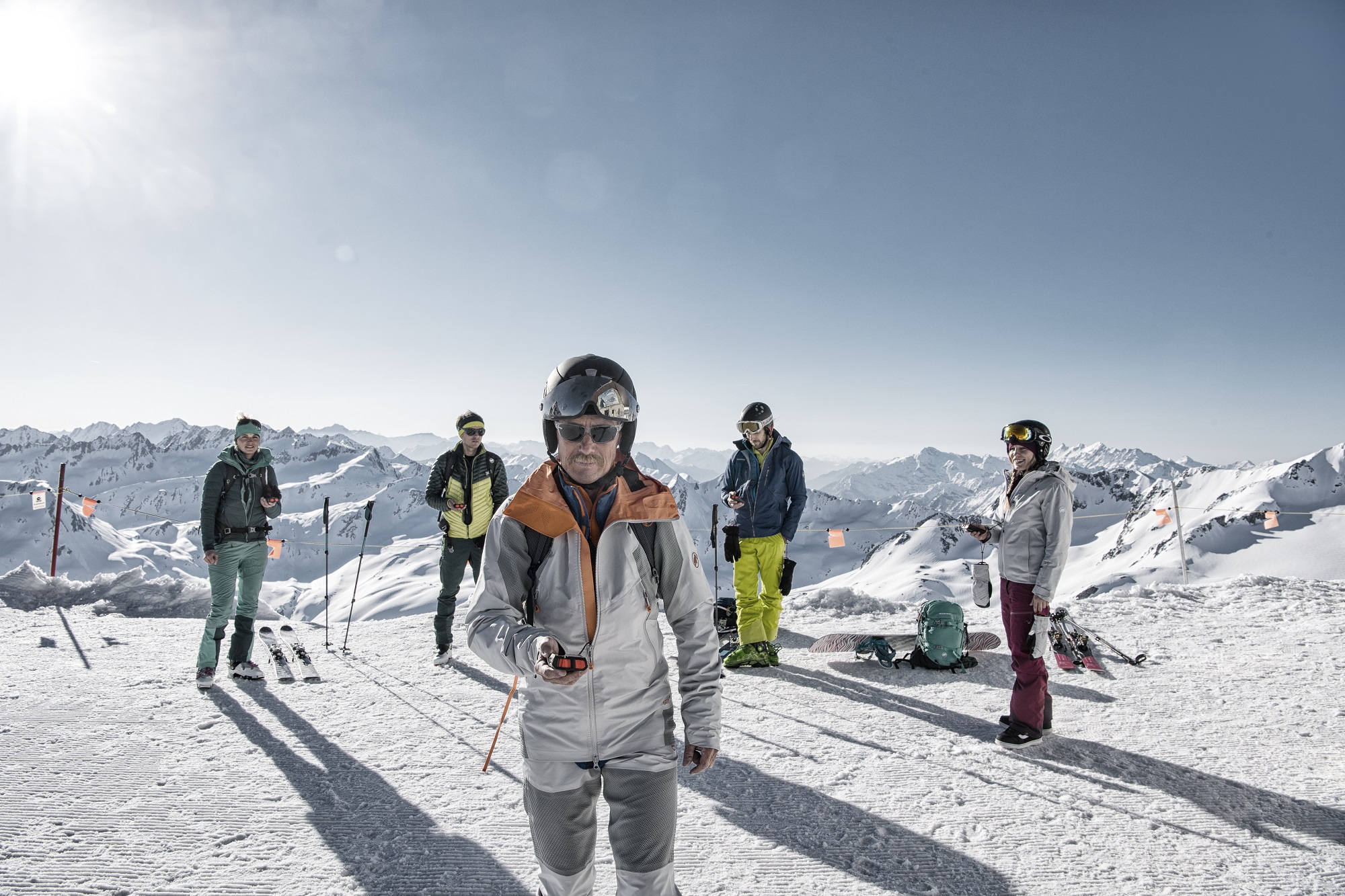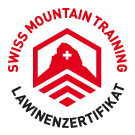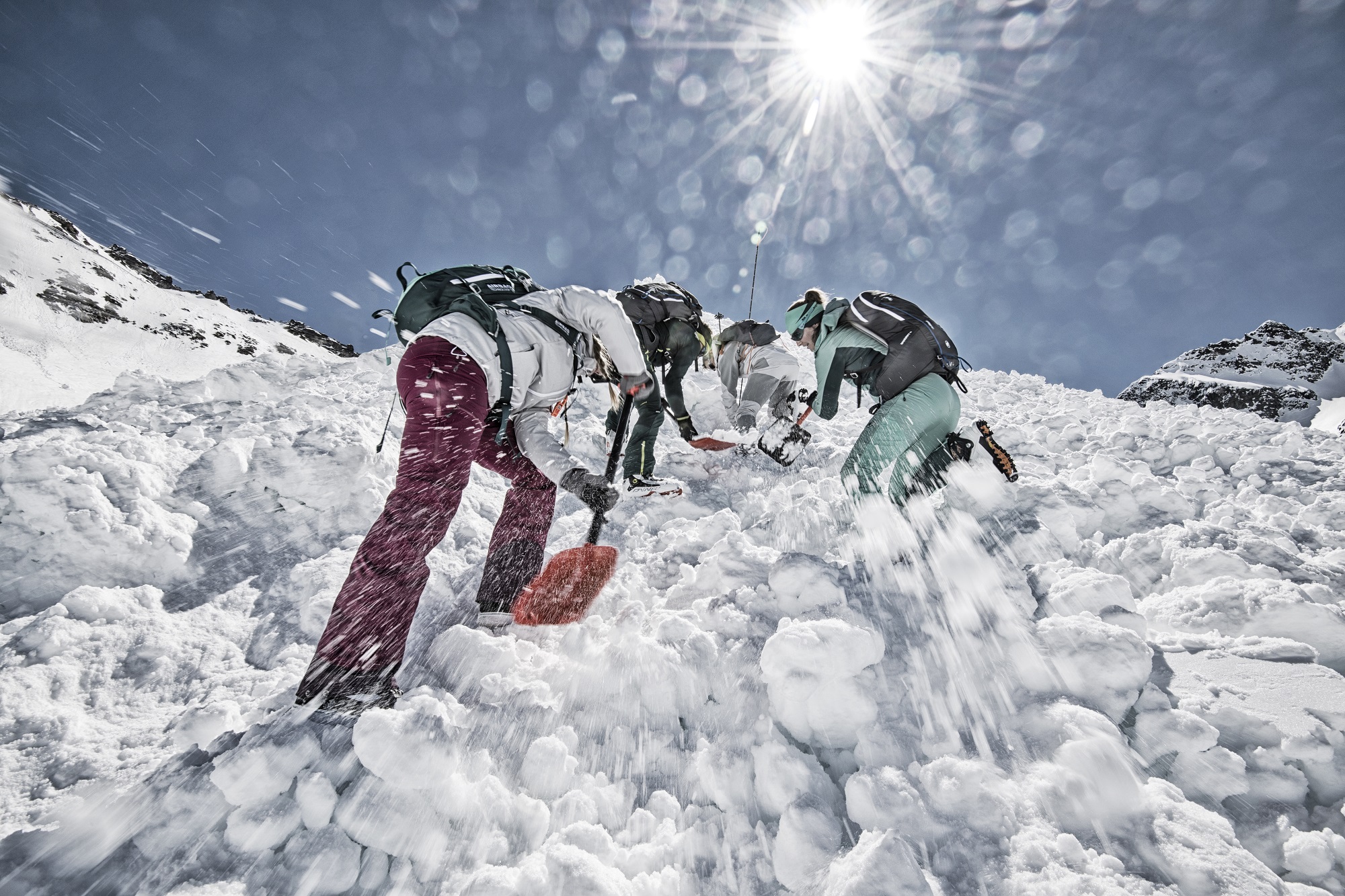
“After an avalanche, every second counts.”
Technical Director and mountain guide Markus Wey discusses in an interview how to properly prepare for ski tours in the winter and what an avalanche training course at the Mammut Alpine School has to offer you. He also talks about his many years of experience as a mountain rescuer, about searching for buried victims with his avalanche dog and whether he himself has ever been caught in an avalanche.
As an experienced mountain guide and rescuer, you’re confronted with life and death situations. Can you tell us about some of your experiences?
After avalanches, we encounter a variety of situations. Usually, those who are not buried take immediate measures and start the search. But unfortunately there are still quite a few snow sports enthusiasts who leave the controlled areas and go off-piste without safety equipment. Without these electronic devices, the only way to search for them is with an avalanche dog. Depending on the type of snow, it can be quite a while before the dog catches a scent. After 15 minutes, the odds of survival for buried victims are less than 50%. That’s why it’s important for the other people who are already on-site to start the search immediately, so the rescue crew (Rega, SAC) that has been notified can evacuate the person as soon as possible.
How long it takes is a matter of life and death, especially when searching for buried victims. What does that mean?
Anyone who ventures off into uncontrolled terrain in the winter should be aware that avalanches can be deadly and that every minute counts. The safety equipment, which is described in every book on the topic, is used to start the search and rescue immediately. Only then and with the necessary skills can the buried person be rescued in time.
Properly preparing for the ski touring season starts before the first snowfall. What does that mean?
Even before the first flakes have hit the ground, all materials and equipment need to be inspected: electronic devices must be maintained, which includes installing any firmware updates. Everything from shovel to probe, the triggers for the airbag system as well as the filling weight and cartridge connection have to be checked. Skis, bindings, skins and poles also all need to be checked to make sure they are in proper working order.
Why is good, regular avalanche training so important?
Today’s safety products are getting faster and more precise all the time – and easier to use. But that doesn’t mean you don’t need training and regular practice. Only by regularly using your tools and equipment can you become familiar with the features and pitfalls of them and react appropriately. When you’re practically able to do something in your sleep, it’s more likely you will also act correctly in an emergency situation.
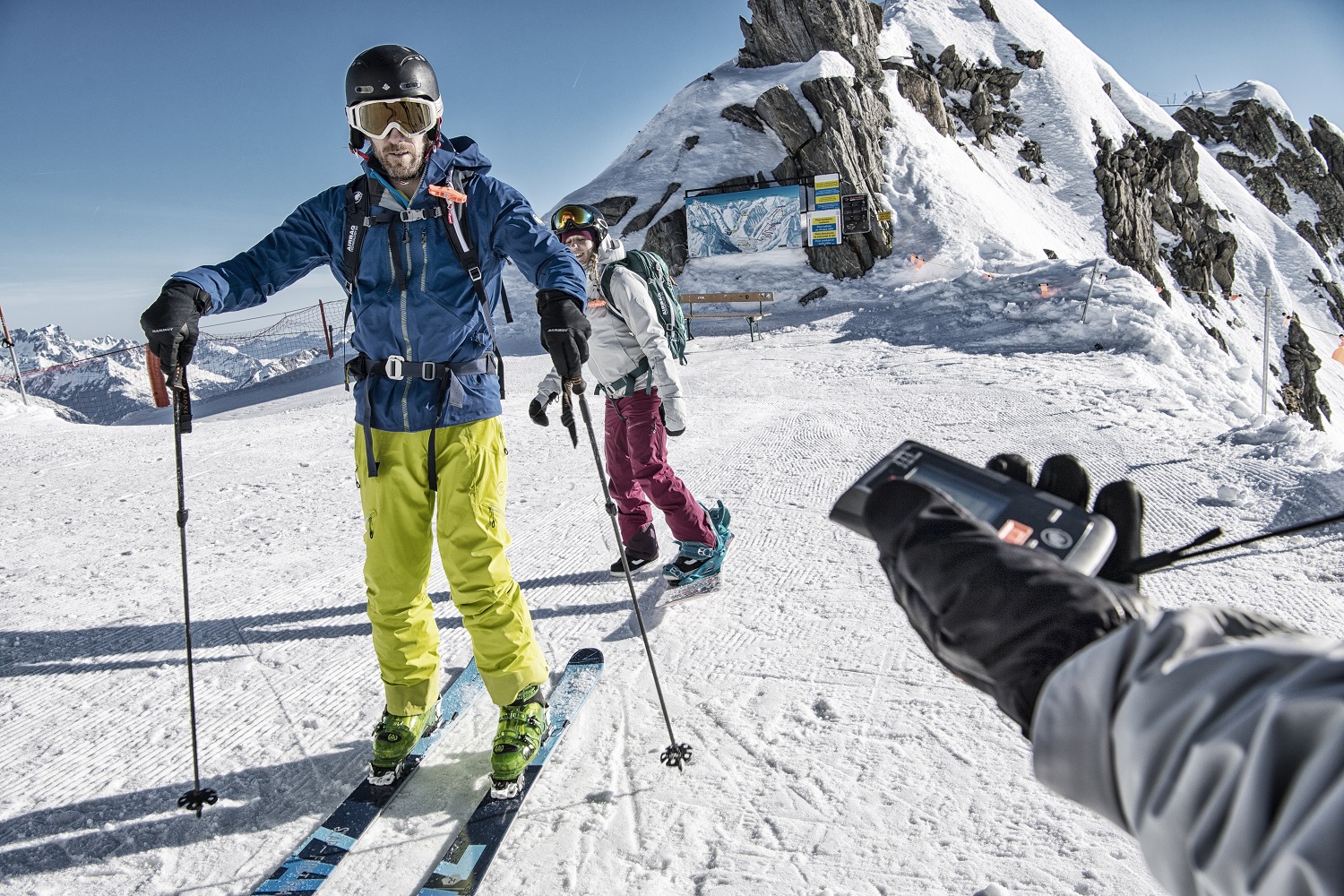
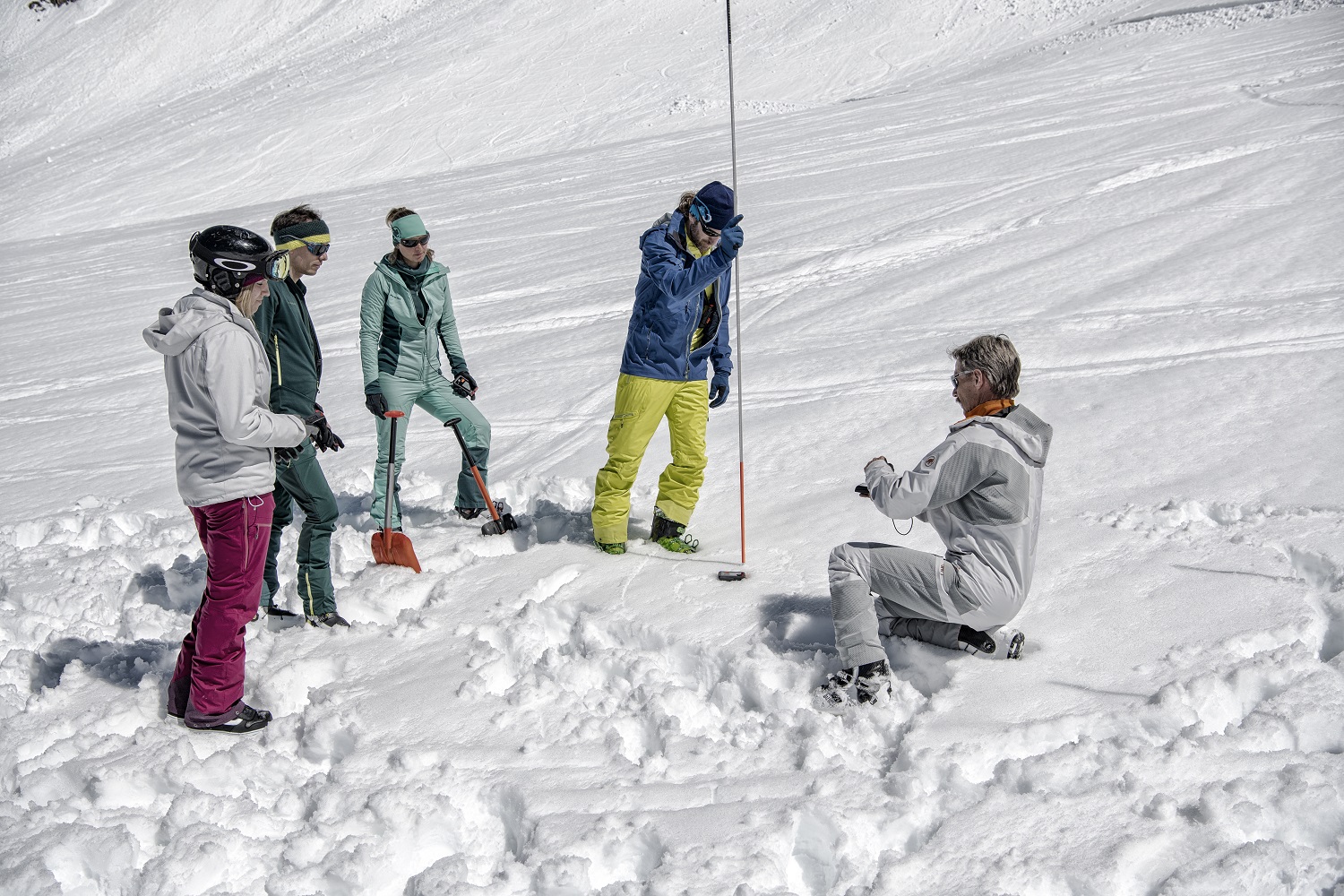
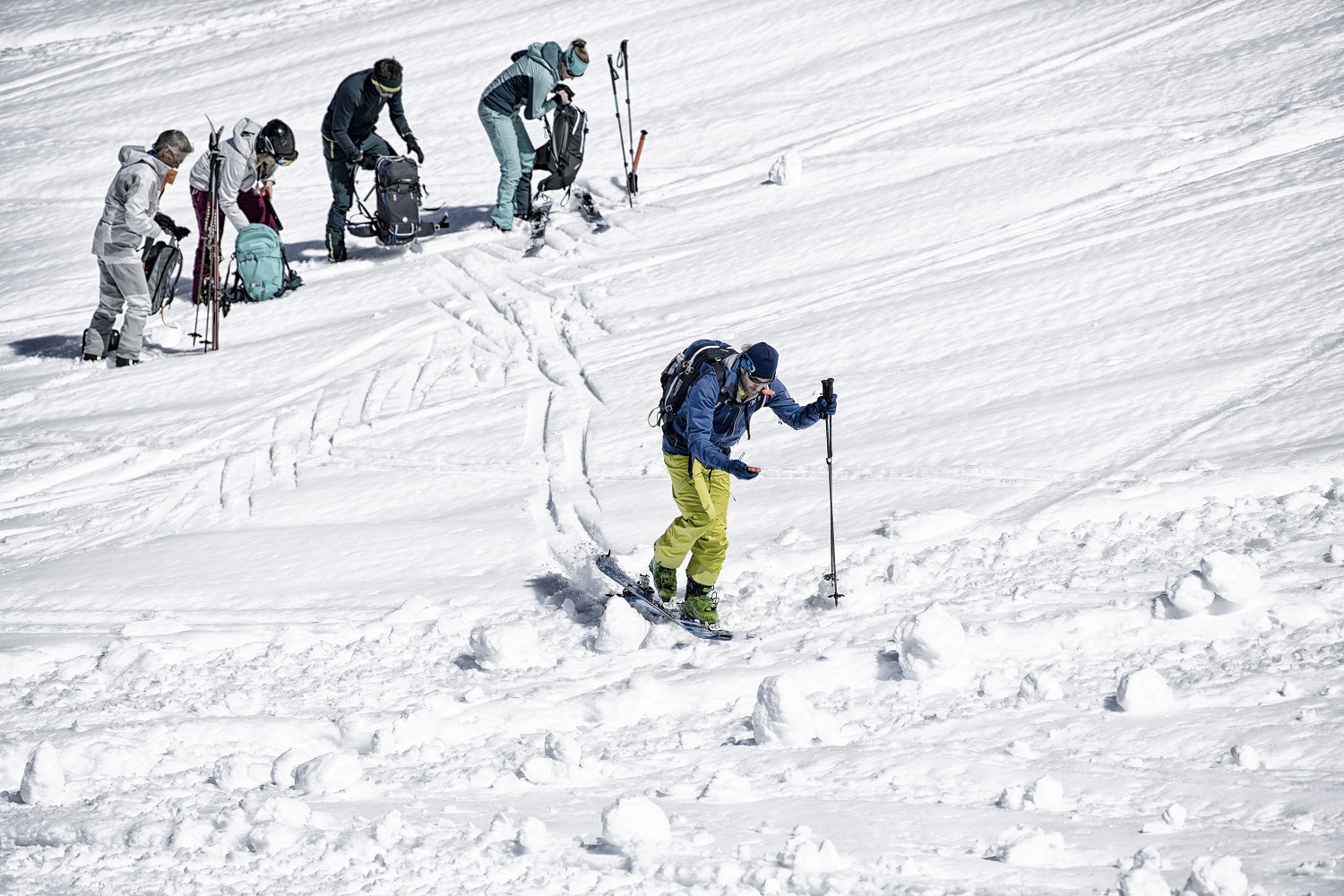
REACTING QUICKLY, APPROPRIATELY AND EFFECTIVELY – During our avalanche training, you will have a chance to learn how to use avalanche equipment (beacon, probe, shovel, airbag backpack) on practice tours out in the terrain and learn the fundamentals of avalanche science.
What do you cover during the avalanche training course at the Mammut Alpine School?
When you get a new phone, you play with it constantly at first, testing out all of its features and quickly figuring out all of its quirks. The same is true for avalanche safety equipment, particularly search beacons. You should practice handling them as much as possible and under the most challenging conditions, which is precisely the goal of our avalanche training.
Can you even train for an emergency like an avalanche accident?
When you’re practically able to do something in your sleep, it’s more likely you will also act correctly in an emergency situation.
How important is it to have the right equipment and materials?
Extremely important. However, even the best equipment is only as good as the person using it.
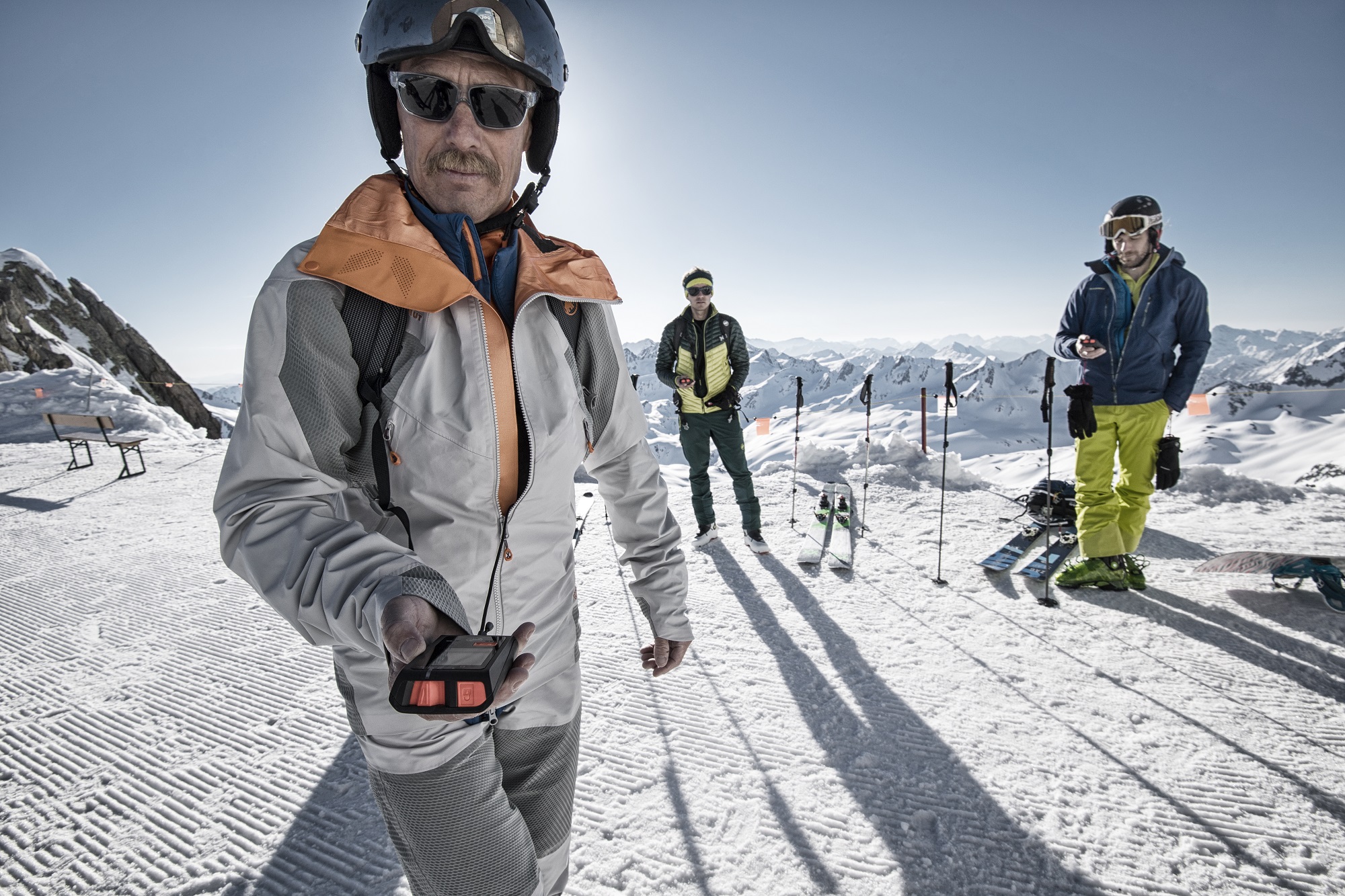
Markus Wey also has an avalanche rescue dog, who often joins him when he’s out on mountain rescues. He answers the main questions in an interview.
How much training does a dog need until it can search for and rescue a person buried in the snow?
Already as puppies, the dogs are trained with games to prepare them for their work as rescue dogs. Over the course of many short lessons, we show the dogs what we want them to do and how. It takes a lot of motivating the dog during the first six months and then further sessions to make sure they retain the skills before they’re ready to pass the tests. They’re at least two years old before they’re ready for a rescue with the team.
Have you been on many rescues with your dog? Does he also need time off?
Last winter, we were on three rescues together. All of the situations involved roads that had been covered. Thankfully, no one was buried. The dogs need very little time to recover. During longer rescues, they may be in action for up to an hour. They need just half an hour before they are ready to go again. Of course, it depends on the dog’s level of training, just like it does for a human.
Are the dogs rewarded after a successful rescue?
The dogs are always kept motivated. Whether with words of encouragement or a treat, it doesn’t really matter to them; they just want to show off their skills. If we’re unsuccessful, we make the dogs feel happy by letting them find a dummy that we’ve buried. After the dogs have found it in a snow cavity, we reward them with plenty of food.
An avalanche rescue dog searching for the buried victim.
Markus Wey, who has been working as a mountain rescuer for years, tells us about his many experiences.
What factors contribute to a successful rescue?
As first responders, it’s always important to correctly assess the risk level. Your own safety comes first, which is why we take all possible precautions to get out of the hazard area as quickly as possible in case another avalanche occurs. As mountain rescuers, we certainly hope nothing else happens and that victim and rescuers both walk away unharmed.
How do you feel when you are able to rescue a person who has been buried in an avalanche?
It’s just your job. Of course, you’re really tense and don’t know what you’re going to find. But this is not the time or place for emotion. You’re working and fully occupied with the task at hand.
Mountain rescues are extremely taxing, both physically and mentally. How do you deal with that?
A rescue usually tests the limits of your abilities as well as your own safety. Every rescue is followed by a debriefing to discuss how the rescue went along with the psychological aspects.
If I ever get buried in an avalanche, I hope that my students will have internalized the skills from the training and that they react quickly and correctly to rescue me.
In all your years as a mountain rescuer, what have you learned?
That it’s definitely better to never get caught in an avalanche in the first place.
Have you ever been in an avalanche?
No. I’ve certainly been incredibly lucky as well. But I also put it down to good preparation and a healthy respect for nature that I’ve never been buried. My motto is: have the courage to head out, but also have the courage to turn back.
